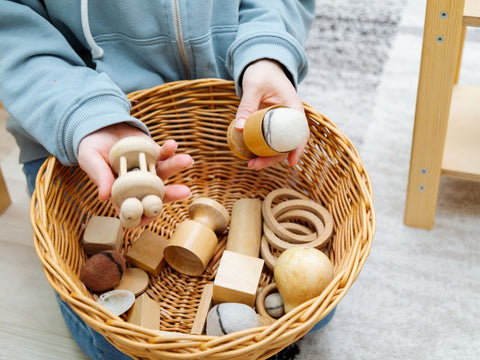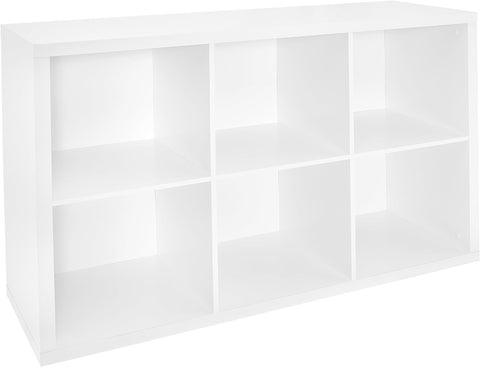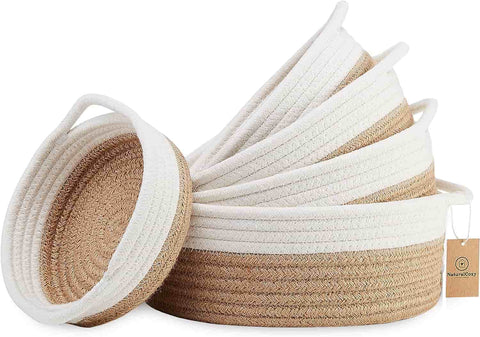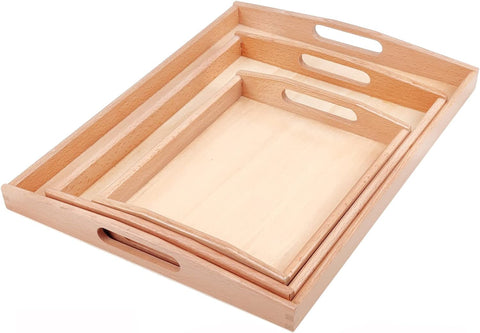Top 5 Tips For Storing Toys the Montessori Way

As an Amazon Associate we may earn from qualifying purchases.
The Montessori approach doesn't place a huge emphasis on toys for young children, and yet it's likely that before long, your home will be full of them! So it’s little wonder that parents are often hunting for the perfect storage solutions to keep everything in order.
Often the preferred solution is to have large bins or boxes that everything can quickly be swept into at the end of the day. Although this may be convenient for us caretakers, having large amounts of toys stored together in bins or boxes can actually hinder your little one’s development in the following ways:
- overwhelming them with choices
- reducing time spent playing
- interrupting concentration
- not enabling them to access toys independently
- not encouraging respect or care for belongings
- not supporting organization & categorization skills
This does not mean you need to have no bins and every toy out on display for your child. Let’s look at some toy storage options that more align with the Montessori approach:
#1 - Low, open shelving units
- These are shelving units that are completely open & low to the ground. You have likely seen them from Ikea or Target or another big box store.
- Open shelves allow children to easily see & access toys independently, even if they are not yet able to stand.
- Cube shelving is a very popular choice that comes in lots of different sizes. With the varied options and numbers of shelves, you will likely be able to find the right size and dimensions for your space and your little one.
#2 - Small, shallow baskets or trays
- The shallow dimension of these baskets allow for easy visibility of the contents inside and prevent the basket from becoming overloaded and blocking the child’s view of toys buried below.
- Smaller baskets are easier for young children to move/carry around if they choose to move their items to a different work or play space.
- The baskets can create a more uniform look on each shelf cubby if aesthetics is important and you do not want varied colors of toys throughout the room.
#3 - Grouping toys by type, skill required, or developmental stage
- Baskets can be used to group items such as teethers, balls, instruments or toy animals.
- Grouping toys by type or the skill required for the toy can help your child begin thinking in categories and develop their organizational skills.
-
Grouping toys not only supports development of grouping and categorizing skills, but also helps make for easier clean up of smaller items
#4 - Displaying only a small number of toys & rotating them regularly
- Having too many toys available means that children will spend more time choosing & finding toys, than actually playing with them. It has also been shown to negative impact concentration.
- Aim to have around 6-8 toys at one time & rotate them based on your child’s current interests & developing skills

#5 - Choosing aesthetically pleasing toys
- Although this may not seem like a storage tip, keeping your items organized and in a usable manner starts with the initial respect of the item.
- Human eyes like to look at pretty things even from our initial baby stage. Making sure toys are aesthetically pleasing will draw your child to work with their items and respect them early on.
- Respecting the toys help keep them clean, unbroken, and organized.

As tempting as it may seem to use storage bins to quickly tidy a room full of toys, focusing on reducing and organizing your child's play space will ultimately be far more beneficial for their play and learning. It will also make it far easier for you to help them reset the space at the end of each day, while teaching them to respect & care for their belongings!















